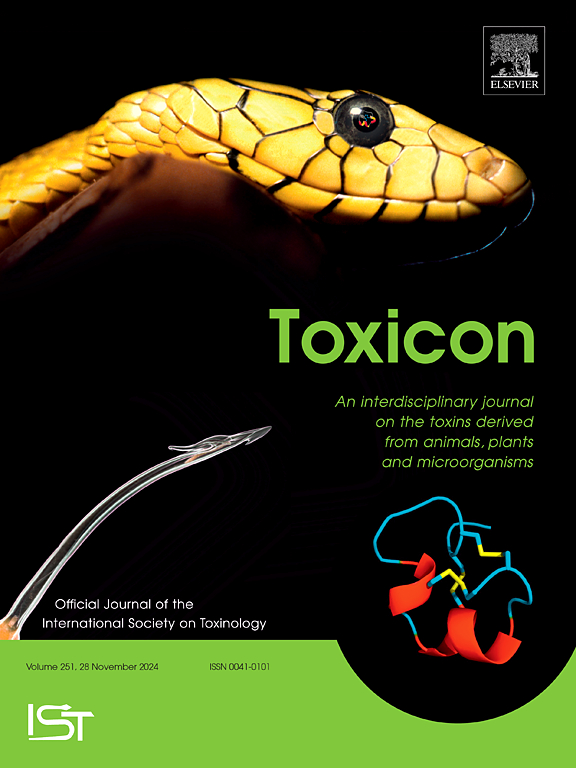Exploring ethnobotanical remedies: Medicinal plants for snakebite envenoming treatments in the Oued Righ region (Northern Algerian Sahara)
IF 2.6
4区 医学
Q2 PHARMACOLOGY & PHARMACY
引用次数: 0
Abstract
Snakebites present a significant health risk in the Sahara, where access to modern medical facilities is limited, leading local populations to rely on traditional remedies. The medicinal plants used by indigenous communities in the Oued Righ region of the Northern Algerian Sahara are vital for treating envenomation from snakebites. This study provides an ethnobotanical inventory of medicinal plants used by local communities in the Oued Righ region for snakebite treatment and evaluates their therapeutic potential. Ethnobotanical data were collected through structured surveys of 200 local residents, herbalists, and healers. Data were analyzed using ethnobotanical indices, including relative citation frequency (RFC), use value (UV), and family importance value (FIV). A total of 41 plant species from 23 families were identified, and their uses for snake envenomation were documented. The most frequently used plants were Citrullus colocynthis (14.95%) and Nigella sativa (10.74%), with Asteraceae being the most represented family. The remedies are predominantly prepared using aerial parts and seeds in various forms, such as poultices and decoctions. The ethnobotanical indices highlight the cultural importance and pharmacological potential of these plants. This study documents traditional knowledge on snakebite treatments, creating a foundational database for future pharmacological studies. The identified plant species hold significant potential for developing new antivenom therapies.

探索民族植物疗法:在Oued right地区(阿尔及利亚撒哈拉北部)治疗蛇咬伤的药用植物。
在撒哈拉沙漠,蛇咬伤对健康构成重大威胁,在那里获得现代医疗设施的机会有限,导致当地居民依赖传统疗法。阿尔及利亚撒哈拉北部Oued right地区土著社区使用的药用植物对于治疗蛇咬伤引起的中毒至关重要。本研究提供了Oued right地区当地社区用于蛇咬伤治疗的药用植物的民族植物学清单,并评估了它们的治疗潜力。民族植物学数据是通过对200名当地居民、草药医生和治疗师的结构化调查收集的。采用民族植物学指标对数据进行分析,包括相对被引频次(RFC)、使用价值(UV)和家族重要性值(FIV)。共鉴定出23科41种植物,并记录了它们对蛇的毒害作用。利用频率最高的植物是甜瓜(14.95%)和黑草(10.74%),以菊科为代表。这些药物主要是用各种形式的空气成分和种子制成的,比如药膏和煎剂。民族植物学指标突出了这些植物的文化重要性和药理潜力。本研究记录了蛇咬伤治疗的传统知识,为未来的药理学研究建立了基础数据库。已确定的植物物种具有开发新的抗蛇毒血清疗法的巨大潜力。
本文章由计算机程序翻译,如有差异,请以英文原文为准。
求助全文
约1分钟内获得全文
求助全文
来源期刊

Toxicon
医学-毒理学
CiteScore
4.80
自引率
10.70%
发文量
358
审稿时长
68 days
期刊介绍:
Toxicon has an open access mirror Toxicon: X, sharing the same aims and scope, editorial team, submission system and rigorous peer review. An introductory offer Toxicon: X - full waiver of the Open Access fee.
Toxicon''s "aims and scope" are to publish:
-articles containing the results of original research on problems related to toxins derived from animals, plants and microorganisms
-papers on novel findings related to the chemical, pharmacological, toxicological, and immunological properties of natural toxins
-molecular biological studies of toxins and other genes from poisonous and venomous organisms that advance understanding of the role or function of toxins
-clinical observations on poisoning and envenoming where a new therapeutic principle has been proposed or a decidedly superior clinical result has been obtained.
-material on the use of toxins as tools in studying biological processes and material on subjects related to venom and antivenom problems.
-articles on the translational application of toxins, for example as drugs and insecticides
-epidemiological studies on envenoming or poisoning, so long as they highlight a previously unrecognised medical problem or provide insight into the prevention or medical treatment of envenoming or poisoning. Retrospective surveys of hospital records, especially those lacking species identification, will not be considered for publication. Properly designed prospective community-based surveys are strongly encouraged.
-articles describing well-known activities of venoms, such as antibacterial, anticancer, and analgesic activities of arachnid venoms, without any attempt to define the mechanism of action or purify the active component, will not be considered for publication in Toxicon.
-review articles on problems related to toxinology.
To encourage the exchange of ideas, sections of the journal may be devoted to Short Communications, Letters to the Editor and activities of the affiliated societies.
 求助内容:
求助内容: 应助结果提醒方式:
应助结果提醒方式:


